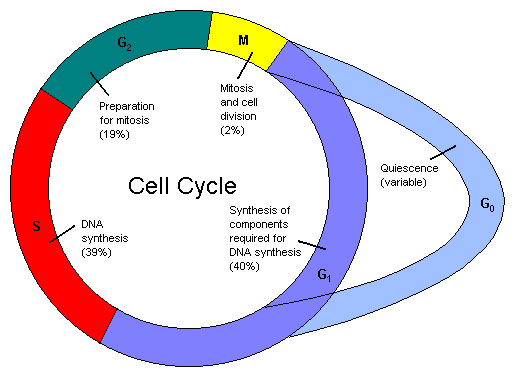
There are three main approaches to dealing with established cancer - surgical incision, irradiation and chemotherapy - and the role of each of these depends on the type of tumour and the stage of its development. Chemotherapy with cytotoxic drugs is the main method of treatment for only a few cancers but it is increasingly used as an adjuvant to surgery or irradiation in a range of common types of tumour.
Cancer cells differ from normal cells in behaviour, in that they can manifest three characteristics not seen in normal cells ¤:
Strictly speaking one should use the term "neoplasia" (new growth) rather than the term "cancer". Neoplasms that have only the characteristic of localised growth are classified as benign. Neoplasms with the characteristics of invasiveness and/or the capacity to metastasise are classified as malignant. The term "cancer" is usually applied only to this latter type of growth. The word "tumour", though defined as "a local swelling", is also often used interchangeably with "cancer" and will be so used here.
The cells of a solid tumour can be considered as belonging to one of three states ¤:

Most antineoplastics, in particular those which are cytotoxic such as cisplatin, affect only the cancer cells in the dividing state which unfortunately, may form as little as 5% of some solid tumours. Although these drugs are said to be antiproliferative, they have no specific effect on evasiveness or the tendency to metastasise. Furthermore, they are indiscriminate, affecting all rapidly dividing normal tissues, and so are are likely to depress bone marrow and growth, impair hearing, cause sterility, hair loss, nausea and vomiting. An anticancer drug must therefore, be able to kill malignant tumour cells in vivo at doses that allow enough normal cells in the patient, to survive so that recovery can occur.
The term "cytotoxic drug" applies to any drug that can damage or kill cells. In practice, it is used more restrictively to mean drugs that inhibit cell division and are potentially useful in cancer chemotherapy. The main cytotoxic drugs can be divided into four general groups; alkylating agents; antimetabolites; natural products; and miscellaneous agents. We will be concentrating only on the sub-class of miscellaneous agents - the platinum compounds. Note that it is not unusual to classify these compounds as alkylating agents, as they act in a similar fashion. Of the platinum agents currently available today, cisplatin is the most potent and widely used. We will therefore, be looking specifically at this drug, discussing its mode of action, side effects, and other properties. The final page will end with the brief mention of some of the many cisplatin analogues that have since been developed.
Before such properties can be discussed, we should first take a brief look at its history to discover how such a simple metal complex has become to be known as one of the best selling cytotoxic chemotherapeutic agents in the world ‡.
All Rights Reserved.